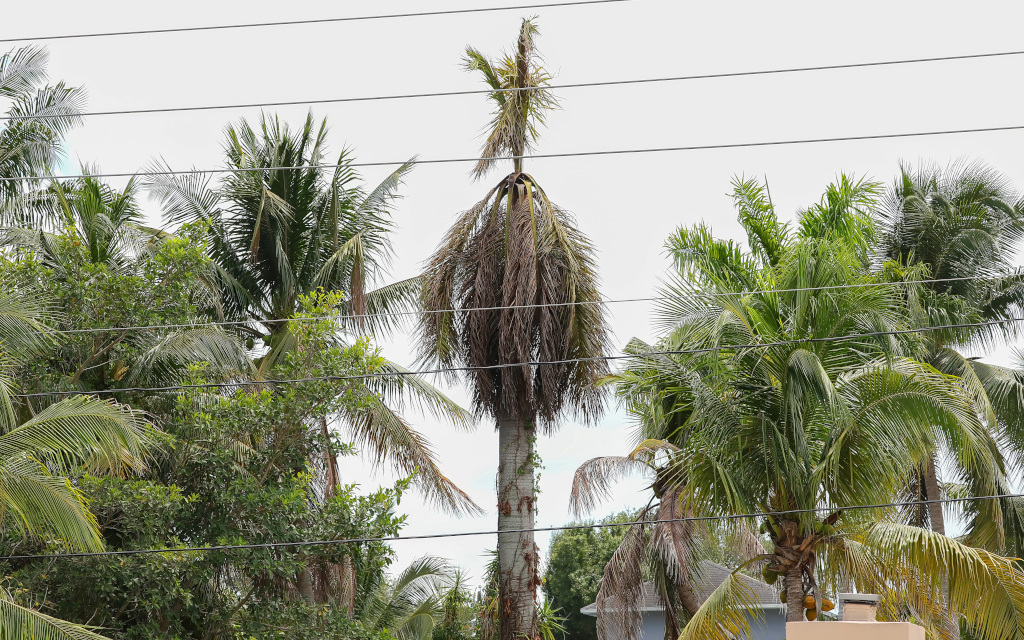What's Wrong With My Palm Tree?

If you're palm tree is drooping, yellow or off color, you may be asking yourself "What's wrong with my palm tree?" There are many causes for sick palm trees like climate, nutrient deficiency and even insects or pests. While a variety of palm trees can do well without any sort of maintenance, it’s not uncommon for your trees to need a health check up from a certified arborist.
Before we get into what can cause your palm trees to become sick, it's important to understand the different characteristics of palm tree and how to know when a palm tree may be affected by some sort of pest or disease.
How many species of palm trees are there in Brevard County?
Because Brevard County is in zones 9b and 10a, we are home to many species of palm trees including:
- Dwarf Palmetto
- Saw Palmetto
- Florida Silver Palm
- Cabbage Palm
- Florida Royal Palm
- Coconut Palm
While these are only just scratching the surface of the different types of palm trees in and around Melbourne, Palm Bay and Viera, you can see there are a variety of palm trees in this area.
What are the parts of a palm tree?
There are three main parts of a palm tree: the trunk, the roots and the foliage, better known as fronds. Most of the palm trees in Brevard County, and in general, grow fronds from the top (or crown) of the plant. Along with the trunk, fronds are used to identify a palm tree.
Generally, the leaves of a palm tree are going to be two different shapes: fan-like (also known as palmate) or feather-like (also known as pinnate).
The root system for palm trees is different than other types of trees. Their roots are short and numerous, spreading across the upper levels of soils across a distance of several feet. This wide network creates strong base that keeps the tree in place.
Once you understand the different parts of your palm tree, it will be easier to identify the type of palm tree you have and whether it is healthy.
Signs that your palm tree is sick
The most common sign your palm tree is sick is a brown center stalk. Look at the top center portion of the palm tree – this is the first place you look for a “health assessment”. If the top center stalks are turning brown and/or shriveling, your tree is not doing well. If the area around the tree is dry, get out the hose! If the dirt or sand around the tree is really soft, it may be getting too much water.
If you notice the lower leaves (fronds) are turning brown, but the top center part of the tree is green, it is most likely not a cause for concern. You can trim the lower palm leaves to stimulate new growth.
When should you call a Certified Arborist?
If you have tried troubleshooting the possible scenarios for your sick palm tree, without success, it’s time to contact Tree Service Express. Certified Arborist and Owner, Nick Rocco, has nearly two decades of experience healing sick trees in Brevard County and throughout Florida.
Contact us for a free estimate, or give us a call at 321-237-3733 with any questions.
